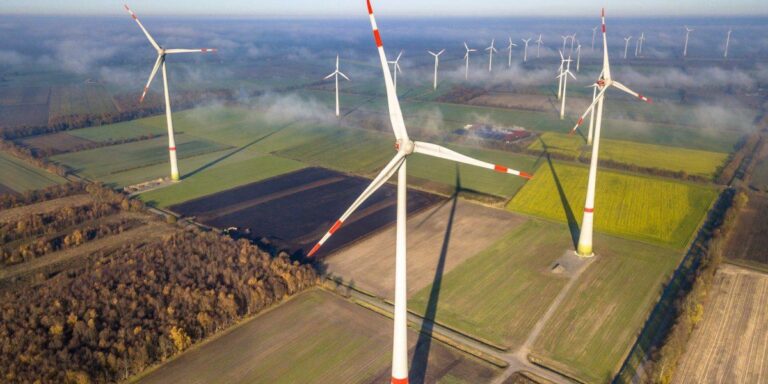The India wind turbine industry is poised for significant growth, with the market projected to reach $4.84 billion by 2025, according to the latest report released by GlobeNewswire. This surge reflects the country’s accelerating commitment to renewable energy and its strategic push to expand wind power capacity amid rising environmental concerns and energy demands. As India positions itself as a key player in the global clean energy transition, the report offers critical insights into market trends, technological advancements, and investment opportunities shaping the sector’s future trajectory.
India Wind Turbine Market Growth Drivers and Regional Opportunities
The rapid expansion of India’s wind turbine market is being propelled by several key growth drivers that are reshaping the renewable energy landscape. Favorable government policies, including ambitious targets under the National Wind-Solar Hybrid Policy, have incentivized investments and streamlined project approvals. Additionally, increasing environmental awareness among businesses and consumers alike is boosting demand for clean energy solutions. Technological advancements reducing turbine costs and enhancing efficiency are further catalyzing market penetration, especially in states with optimal wind speeds like Tamil Nadu, Gujarat, and Rajasthan.
Regional opportunities within India highlight a diverse and promising outlook. Coastal regions continue to dominate wind energy installations due to consistent wind flows, while emerging areas such as Madhya Pradesh and Maharashtra are quickly gaining traction through supportive local policies and infrastructure development. To illustrate, the following table summarizes the top five states and their projected contributions to the market by 2025:
| State | Projected Contribution (%) | Key Strength |
|---|---|---|
| Tamil Nadu | 28% | Established Infrastructure |
| Gujarat | 22% | Robust Policy Support |
| Rajasthan | 17% | High Wind Potential |
| Maharashtra | 12% | Growing Industrial Demand |
| Madhya Pradesh | 9% | Emerging Market |
- Enhanced grid integration initiatives are enabling smoother energy distribution across regions.
- Innovations in offshore wind technology open new avenues along India’s vast coastline.
- Financial incentives and subsidies reduce the cost burden on developers and end-users.
Technological Innovations Shaping the Future of Wind Energy in India
Advancements in turbine design and digital technologies are revolutionizing the Indian wind energy landscape. Recent innovations include the adoption of larger, more efficient rotor blades made from advanced composite materials, allowing turbines to capture more wind energy at lower speeds, thereby maximizing output in India’s varied topographies. Integration of AI-driven predictive maintenance systems is also reducing downtime and operational costs by forecasting potential mechanical failures before they occur. Moreover, the increasing use of drones for real-time inspection and monitoring is enhancing safety and efficiency across sprawling wind farms.
The future growth trajectory is further bolstered by smart grid technologies and hybrid energy systems that facilitate better integration of wind power into the national grid. Below is a snapshot of key emerging technologies reshaping the sector:
- Digital Twin Technology: Virtual replica models optimize turbine performance and lifecycle management.
- Energy Storage Integration: Advanced battery systems stabilize power supply during intermittent wind conditions.
- Offshore Wind Turbines: New offshore projects with floating turbines tap into untapped coastal wind potential.
- IoT Connectivity: Enables continuous data collection for enhanced operational intelligence.
| Technology | Impact | Implementation Stage |
|---|---|---|
| AI-Powered Maintenance | 30% reduction in downtime | Early Deployment |
| Floating Offshore Turbines | Access to 50 GW potential | Pilot Projects |
| Composite Blades | 15% increased efficiency | Mass Adoption |
| Smart Grid Integration | Better load balancing | Developing |
Policy Recommendations to Accelerate Sustainable Industry Expansion
To catalyze the growth of India’s wind turbine sector and capitalize on its $4.84 billion market potential, targeted policy interventions are crucial. Streamlining regulatory frameworks and reducing bureaucratic hurdles can accelerate project approvals and infrastructure deployment. Furthermore, incentivizing local manufacturing through tax breaks and subsidies will foster domestic value addition and reduce reliance on imports. The promotion of public-private partnerships should also be prioritized to leverage private sector efficiency alongside government support, ensuring sustainable capital inflows and innovation adoption.
Another key focus must be placed on skill development and technology transfer, which are essential for maintaining competitive advantage and ensuring quality standards. Policies that focus on empowering local communities and enabling ease of land acquisition will minimize project delays and social resistance. Below is a summary of recommended policy actions:
| Policy Action | Expected Impact |
|---|---|
| Regulatory Streamlining | Faster project completion |
| Tax Incentives for Manufacturing | Boost in domestic supply chain |
| Public-Private Partnerships | Increased innovation & funding |
| Skill Development Programs | Enhanced workforce capabilities |
| Community Engagement Policies | Reduced project resistance |
Wrapping Up
As India continues to prioritize renewable energy in its quest for sustainable development, the wind turbine industry is poised for significant growth, propelled by strong government support and increasing investments. The India Wind Turbine Industry Report 2025 highlights a burgeoning market valued at $4.84 billion, reflecting both the sector’s resilience and its vital role in the country’s clean energy future. Stakeholders across the board will be closely watching how technological advancements and policy frameworks shape the trajectory of this dynamic industry in the coming years.




